Table of Contents
Oat Straw (avena sativa) is green oat grass. The tops of the oat plant in the milky stage before mature oat grains form a head.
Avena sativa, or the common oat plant is a popular cereal grain that has been used by humans as nutrition for at least 3,000 years.
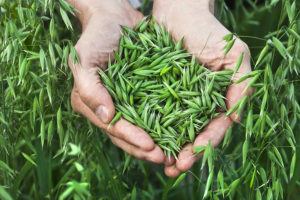
In 1987, the German Commission E declared oat straw be used as a “nervine herb”. The Commission determined that oat straw extract was an effective herbal remedy for anxiety and stress (i.e. nerves).[i]
Oat straw has a reputation in men’s health as a sexual performance enhancer. More recent studies have shown oat straw can improve cognitive performance as well.
The nootropic benefits of Oat Straw were first revealed in the Middle Ages in Europe. In was recommended for boosting mental health, and as a restorative to the nervous system.[ii]
Saint Hildegard of Bingen, a nun and herbalist born in 1098 in what is now present-day Germany, considered oats to be a favorite ‘happiness’ herb.[iii]
Here we investigate using oat straw extract as a nootropic.
Oat Straw helps:
- Inflammation. Bioactive compounds unique to oat straw are anti-inflammatory protecting against neurodegeneration, heart disease, colon cancer and skin irritation.
- Cerebral Circulation. Oat straw helps boost nitric oxide and inhibits PDE4 which help dilate blood vessels. Increased blood flow increases delivery of vital nutrients and oxygen needed for a fully optimized brain.
- Anxiety and stress. Oat straw helps boost Alpha brain waves associated with super-learning, flow states and joy. And helps increase dopamine levels in your brain which increases feelings of pleasure, libido and sexual pleasure. Even cognition gets a boost.
What is Oat Straw (avena sativa)?
Oat Straw (avena sativa) as a nootropic is an extract produced from the common oat plant while still in its milky stage.
Oats are a cereal grain grown in temperate climates world-wide as food for humans and livestock. And as an ingredient used in cosmetics.
The oat plant is descended from avena sterilis, a wild oat that originated in the ‘Fertile Crescent’ that spanned from Israel to western Iran to Europe. It was domesticated about 3,000 years ago in Europe.

Tea brewed from oats has traditionally been used as a sedative. And as an herbal treatment for insomnia and nervous disorders.
Avenanthramides (bioactive compounds unique in oats) have been shown to enhance nitric oxide (NO) production in human smooth muscle cells.[iv] And have anti-inflammatory, anti-proliferative, and anti-itching activity. Protecting against heart disease, colon cancer and skin irritation.[v]
Oat straw extract inhibits phosphodiesterase type 4 (PDE4). PDE4 is a component of signaling pathways involved in the mediation of antidepressant activity.[vi]
PDE4 inhibitors can prolong the effects of cAMP in the brain which can improve long-term memory, wakefulness, is neuroprotective, works as an anti-inflammatory and antidepressant.
Oat straw extract inhibits monoamine oxidase B (MAO-B) which increases dopamine levels in the brain. Helping brain disorders like ADHD and Parkinson’s Disease.[vii]
Oat straw extract suppresses inflammatory cytokines by inhibiting nuclear factor κB (NF-κB) activation[viii] Cytokines are implicated in a number of brain disorders including major depression, schizophrenia and Alzheimer’s Disease.[ix]
How does Oat Straw work in the Brain?
Oat Straw boosts brain health and function in several ways. But two in particular stand out.
- Oat Straw boosts cerebral circulation. Oat straw extract increases blood flow to and within the brain through several mechanisms of action. Oat straw contains the amino acid arginine which synthesizes to create nitric oxide (NO). NO dilates blood vessels allowing more blood to flow.
Avenanthramides (bioactive compounds unique in oats) have been shown to enhance nitric oxide (NO) production in human smooth muscle cells. And the suppression of inflammatory cytokines in combination with increased nitric oxide increases blood flow.
A study with 37 healthy older adults (60+ years) participated in a 24-week randomized, double-blind, placebo-controlled trial. Participants received 1500 mg per day of oat straw extract or a placebo.
The study showed that cerebral vascular responsiveness increased by 42%. This indicates that the middle cerebral artery was able to dilate in response to stress.[x] And more blood flow to the brain increases oxygen and nutrient delivery to brain cells.
- Oat Straw increases Alpha Brain Waves. You experience alpha brain wave patterns as you become more relaxed. And is associated with super-learning, flow states and joy.
German researchers conducted a double-blind, randomized, placebo-controlled crossover study using 1,250 or 2,500 mg of oat straw extract compared to placebo. An EEG was used to measure brain wave frequencies in this trial.
The researchers noted that oat straw extract affected brain wave patterns in an area of the brain associated with cognition. The subjects performed better in arithmetic with fewer errors.[xi]
How things go bad
Ever noticed how older people seem more frail? They suffer from cognitive dysfunction and an overall decline in well-being. Research show these conditions are associated with a drop in dopamine levels as we age.[xii]
↓ Dopamine levels decrease
↑ Monoamine oxidase B (MAO-B) increases
↓ Mood, cognition and bodily function decline
Dopamine levels begin to decline by 13% per decade after age 45.[xiii] Cognition, mood and sexual function all suffer as a result. And gradually progress into diseases such as Alzheimer’s and Parkinson’s.
Oat Straw benefits
Researchers have found that this age-related decrease in dopamine is caused by an enzyme called monoamine oxidase-B (MAO-B).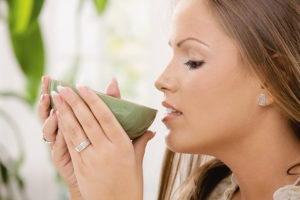
In our youth, MAO-B regulates the exact amount of dopamine we need in our brain. But as we age, MAO-B levels get out of hand and increase too much.[xiv] As MAO-B levels rise, dopamine levels fall.
Research has shown that inhibition of MAO-B preserves brain function by protecting dopamine. And extends cognition, sexual function and life span.[xv]
Oat Straw extract has been found to inhibit MAO-B, and enhance dopamine that normally declines with age.[xvi]
Oat straw extract can:
- Work as an antidepressant
- Help you cope with stress
- Reduce anxiety
- Control inflammation
- Relieve skin irritation
- Increase libido and sexual performance
How does Oat Straw feel?
Most neurohackers report that supplementing with oat straw extract increases energy levels and libido.
Others report more mental clarity, less anxiety, and an overall sense of well-being.
Men say it increases libido and morning wood.
Oat Straw Clinical Research
Oat Straw Improves Memory
An Australian study was conducted with a group of elderly people. Some showed signs of mild cognitive impairment while others showed no impairment. Researchers wanted to measure cognitive performance after taking oat straw extract.
Subjects were randomly assigned to receive a single dose of oat straw extract once a week. The study used 0 mg, 1,600 mg or 2,400 mg of oat straw extract.
This was a “crossover” trial which means each subject was rotated through all 3 doses. So each participant functioned as a “control” during the trial.
Researchers used the Stroop Color-Word Test which measures memory, executive function, catching errors, appropriate responses and attention.
In this study, those who did not use oat straw extract had an average of 3.39 errors on the test. Those receiving 1,600 mg made only 1.2 errors (a 65% improvement).
The subjects who reported no cognitive impairment did even better with an average of 0.55 errors compared to placebo who averaged 2.13 errors (a 74% improvement). The 2,400 mg subjects performed about as well as those taking a placebo.
The 2,400 mg dose of oat straw extract is significant because it shows that suppressing MAO-B too much will not improve cognition.[xvii]
Oat Straw for Improved Cognition
A study using oat straw extract (Neuravena®) assessed the effects of a single dose with healthy adults aged 40 – 65 years with self-declared memory decline.
Participants received a single dose of 800 or 1,600 mg of oat straw extract. Cognitive function was assessed measuring attention, spatial-working-episodic memory and executive function before dosing. Testing was done 1, 2.5, 4 and 6 hours after dosing.
The results showed that 800 mg of oat straw extract increased speed of performance. Participants experienced improved performance of delayed word recall in terms of errors. And executive function in terms of decreased thinking time and overall completion time.
The researchers concluded that acute (one-time) dosage of oat straw extract produced optimal effects on cognition at or below 800 mg. Once again showing that when inhibiting MOA-B, too much inhibiting does more harm than good.[xviii]
Oat straw extract enhances attention and concentration without the side effects of insomnia, nervousness, or anxiety.
Oat Straw Recommended Dosage
Oat straw extract recommended dosage: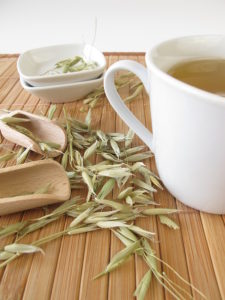
- Oat straw powder in a capsule is 350 mg up to 3-times daily
- Oat straw tincture ½ to 1 teaspoon up to 3-times daily
- Oat straw tea up to 3 cups per day
Most clinical studies showed the most effective dose to be between 800 – 1,600 mg per day.
You should not exceed the recommended dosage because studies show that inhibiting MOA-B in excess will not provide the benefits normally associated with oat straw supplementation.
Oat Straw Side Effects
Oat straw is natural, non-toxic and considered very safe.
Exceeding recommended doses however can inhibit MAO-B too much and you will not get the cognitive benefit you’re looking for with oat straw.
Best type of Oat Straw to Buy
Oat straw is available as powdered leaves and stems in capsule form, oat straw extract standardized 10:1 or 20:1, and alcohol extract tinctures.
NOTE: This review contains affiliate links, and I will be compensated if you make a purchase after clicking on my links.
Neuravena® (EFLA®955) is a patented oat straw extract made by Frutarom Health and licensed to some supplement manufacturers such as Life Extension – Dopa-Mind.
Nootropics Expert Recommendation
Oat Straw extract 800 – 1,600 mg per day
 I recommend using Oat Straw as a nootropic supplement.
I recommend using Oat Straw as a nootropic supplement.
Your body does not make Oat Straw on its own. So you must take it as a supplement.
Oat Straw is especially helpful for those dealing with dopamine decline due to aging. As we age and particularly past age 40, MOA-B is produced in excess in our brains which causes dopamine to decline.
Declining dopamine levels affect cognition, sexual function, mood and longevity. Oat straw extract is a natural inhibitor of MAO-B and will help restore dopamine to youthful levels.
Oat Straw is also helpful for those suffering from Parkinson’s or Alzheimer’s disease. Increased MOA-B, loss of dopamine receptors, and declining dopamine levels all contribute to neurodegenerative disease. Studies have found that using oat straw extract early in the diagnosis of disease can help alleviate symptoms of these diseases.
You can safely take up to 1,600 mg of Oat Straw extract daily if needed. Half the dose first thing in the morning. And the other half early afternoon. Oat straw extract acts as a stimulant so avoid taking it too late in the day or it may affect sleep.
Do not exceed recommended doses (more than 1,600 mg) of oat straw extract. You’ll suppress MOA-B too much which can mess with dopamine levels in your brain.
I recommend: Life Extension – Dopa-Mind.

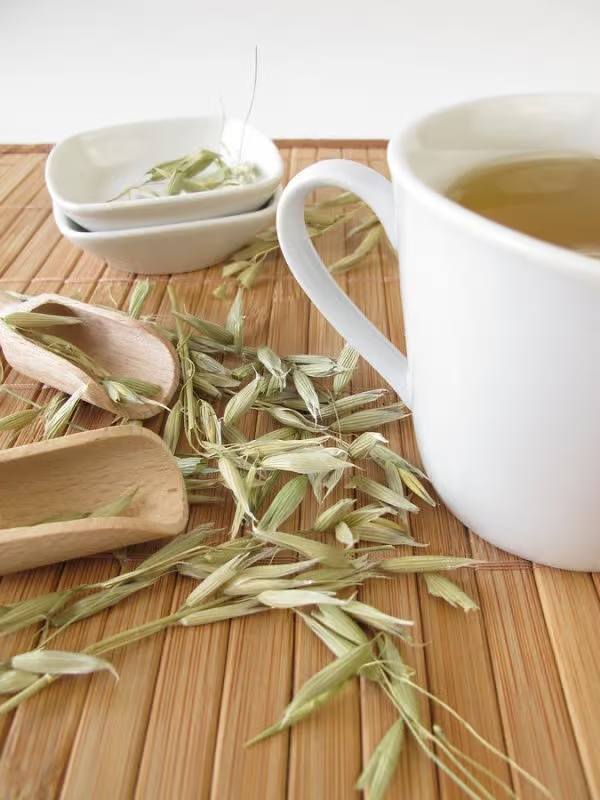
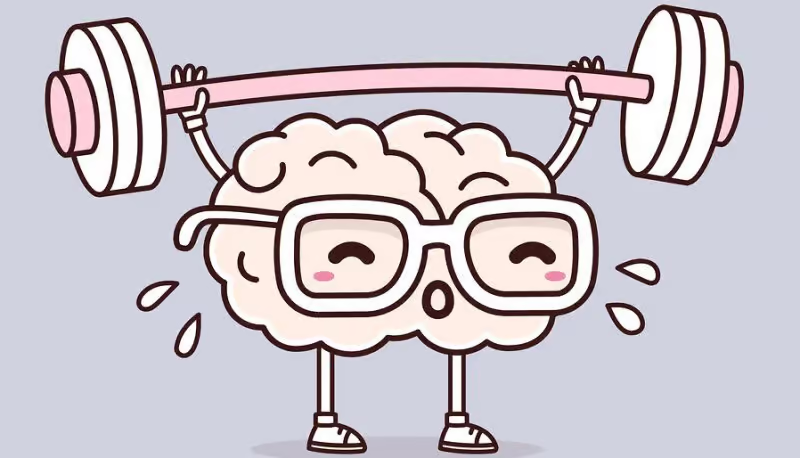
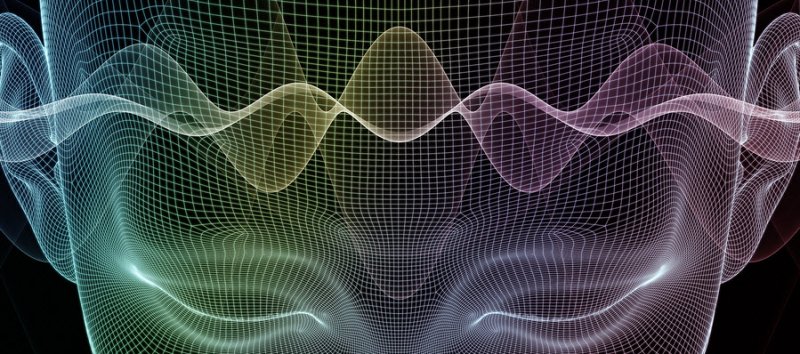





Join The Discussion - 64 comments
Anthonyg
December 7, 2021
Hi David,
I notice that you don’t include Selegiline in your current list of nootropics, but you do have a previous article about it. Ward Dean mentions it as a neuroprotective and MOA-B inhibitor. What are you’re thoughts on oat straw as an MAO inhibitor vs Selegiline? Thanks!
David Tomen
December 7, 2021
Anthony, I do not include Selegiline because I consider it a Smart Drug and it is available by prescription only in most countries. I do not consider it a natural nootropic.
Oat Straw extract should be as good of a MAO-B inhibitor but it depends on how it works for you and the quality of the Oat Straw extract.
Aryeh Levine
November 14, 2021
Great article. I’m curious about the MAOI effects- how strong and MAOB Inhibitor is it? in low doses (400-800mg) is it safe to mix with other drugs? i cant find any info on interactions with this supplement. Should someone be careful about tyramine in foods with this supplement, or other drugs that normally cant be mixed with MAOIS?
David Tomen
November 18, 2021
Aryeh, it does not seem to be a problem as long as you stay under 1,600 mg per day. It is dosing in excess of that that could cause problems.
Ginkgo Lanugo
October 5, 2021
Hello David, what do you think of young barley ? It can be used as a replacement for minerals and vitamins in powder form ? Your big fan Štěpán from czech republic.
David Tomen
October 5, 2021
I don’t have any information on barley. Only research and clinical studies on the nootropic benefits of Oat Straw.
DAKA
March 26, 2021
Dear David, i was wondering if avena sativa heelps to reduce/or affects blood pressure in any way.
I am taking 350mg 10:1 extract with breakfast ( which is 3500mg of the herb) is it too much?
Best regards
David Tomen
March 27, 2021
DAKA, please read the last two paragraphs in the “Dosage Notes” section above. 350 mg of an extract is likely not enough. And no, Oat Straw is not known for affecting blood pressure.
Kai
February 23, 2021
Hi Dave, great article! What dose is optimal? At what point does it start getting less effective as you increase dose? Also I’m about to stack with phenylethlamine, so what dosage should I do in combination with phenylethlamine?
David Tomen
February 23, 2021
Kai, the dosage for Oat Straw extract is 800 – 1,600 mg per day no matter what you are using it for. But the bottom-line is the “optimal dose” is what works best for you. Just remember that more is not better. Especially with a nootropic that works as an MAOI.
scott johnson
December 9, 2020
Hi Dave,
Really wonderful article . A nice place to begin a personal trial. I just bought a tincture extract (Greenbush Natural Products).Liquid. The label specifies a 15:1 extraction ratio: it says ” 15000 mg of wild oats yields 1000 mg extract.” “Extract” is very non-specific. It can mean almost anything. Can you give me a guideline for (roughly) converting what is described as “800-1600mg extract in your article to what I’ve got? I’m a clinician and I’m not looking for an internet dx/tx, but just an idea of what they mean by yadda yadda extract vs something mathematical like I’ve got. Like you say, dosage matters. If I really need 1/2 ml of this stuff (11mg ‘extract’) or 5ml or what ever, if you know something about a starting point I’d appreciate it.
Thx for your great work! My first exposure to your site and I’ll be back.
Best Scott Johnson
David Tomen
December 10, 2020
Scott, the Oat Straw tincture you have must have a dosage recommendation on the label. Something like “one drop = XXX”. You are aiming for the equivalent of around 1,000 mg of an extract to start.
If it’s not listed on the label I suggest contacting the company and asking them how much of their tincture equals 1,000 mg.
Roger
October 27, 2020
Hello David
Can avena sativa lower prolactin levels?
Thanks
David Tomen
October 27, 2020
Negative.
Milos Pajic
September 14, 2020
Hi Dave,
Thanks for such a helpful article! Do you maybe know what is the active matter in oat straw extract inhibiting MAO-B production? Is it Beta Glucan or…it is just about a set of various bio-chemicals…?
Many thanks!
David Tomen
September 14, 2020
Milos, all I have access to is the Abstract from a Swiss clinical study:https://www.thieme-connect.com/products/ejournals/abstract/10.1055/s-2006-954926. There may be something in the full study with specifics. But I haven’t access to it nor speak the language. So let’s go with “various bio-chemicals” for now.